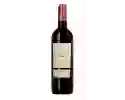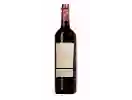
Château de JauJau Sauvignon - Gros Manseng
This wine generally goes well with vegetarian, rich fish (salmon, tuna etc) or shellfish.
Food and wine pairings with Jau Sauvignon - Gros Manseng
Pairings that work perfectly with Jau Sauvignon - Gros Manseng
Original food and wine pairings with Jau Sauvignon - Gros Manseng
The Jau Sauvignon - Gros Manseng of Château de Jau matches generally quite well with dishes of rich fish (salmon, tuna etc), shellfish or vegetarian such as recipes of chinese fondue, flambéed prawns or broccoli and blue cheese quiche without pastry.
Details and technical informations about Château de Jau's Jau Sauvignon - Gros Manseng.
Discover the grape variety: Gros Manseng
Gros Manseng blanc is a grape variety that originated in France (Netherlands). It produces a variety of grape specially used for wine making. It is rare to find this grape to eat on our tables. This variety of grape is characterized by medium-sized bunches and small grapes. Gros Manseng blanc can be found in several vineyards: South-West, Languedoc & Roussillon, Cognac, Bordeaux, Armagnac, Provence & Corsica, Rhone valley, Loire valley, Savoie & Bugey, Beaujolais.
Informations about the Château de Jau
The Château de Jau is one of of the world's great estates. It offers 51 wines for sale in the of South West to come and discover on site or to buy online.
The wine region of South West
The South-West is a large territorial area of France, comprising the administrative regions of Aquitaine, Limousin and Midi-Pyrénées. However, as far as the French wine area is concerned, the South-West region is a little less clear-cut, as it excludes Bordeaux - a wine region so productive that it is de facto an area in its own right. The wines of the South West have a Long and eventful history. The local rivers play a key role, as they were the main trade routes to bring wines from traditional regions such as Cahors, Bergerac, Buzet and Gaillac to their markets.
The word of the wine: Runoff
Failure of the vine flower to fertilize at the time of flowering, when the weather is too cold or rainy. Under these conditions, the vine will have few or no clusters.














